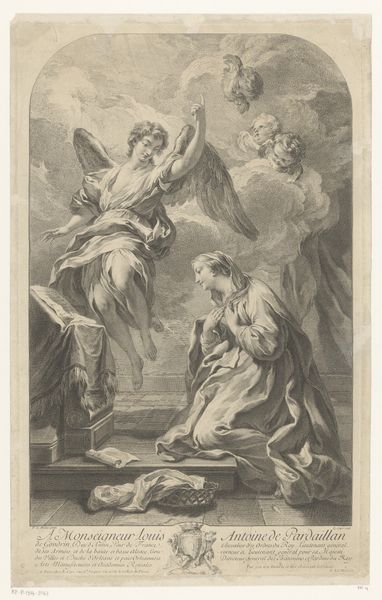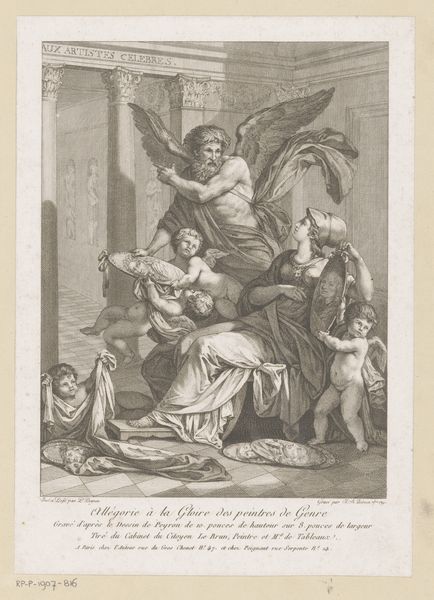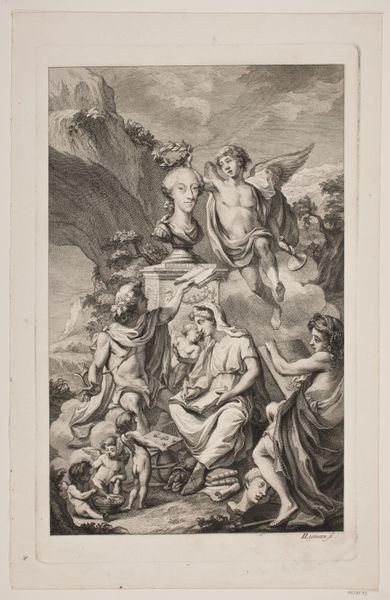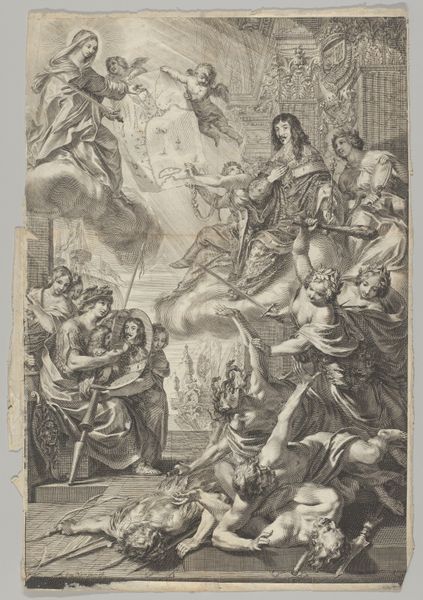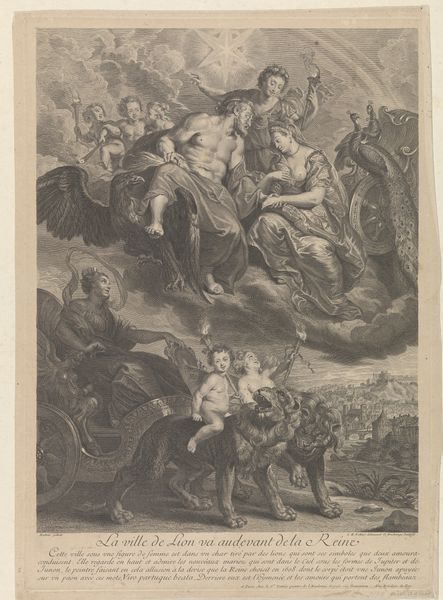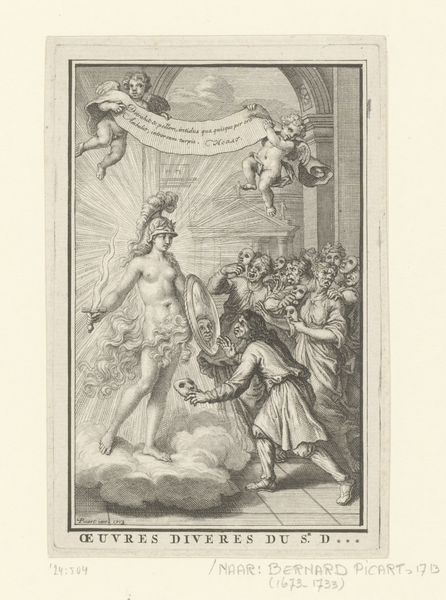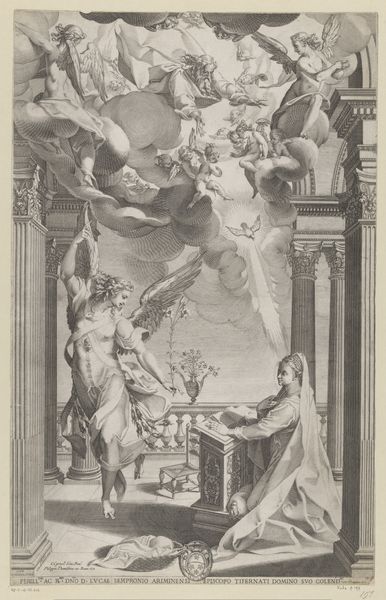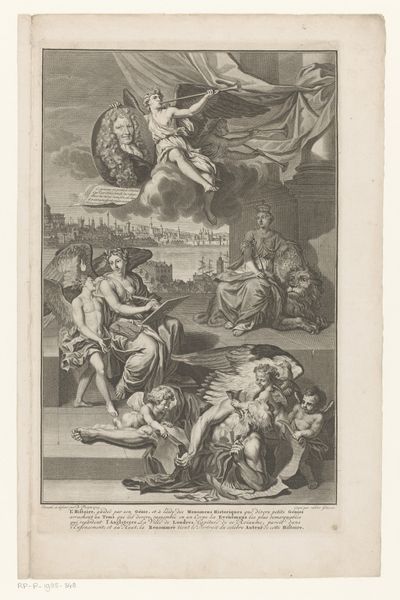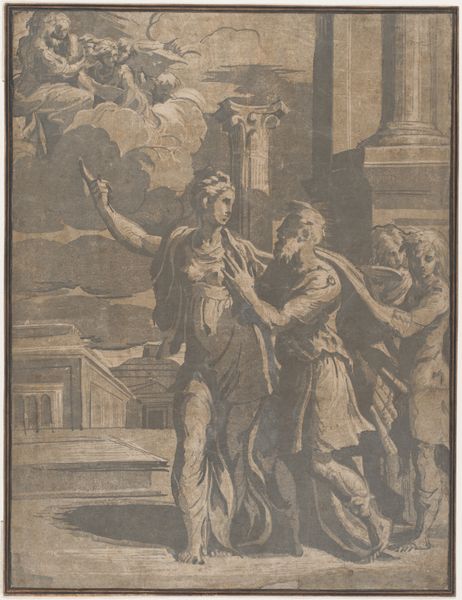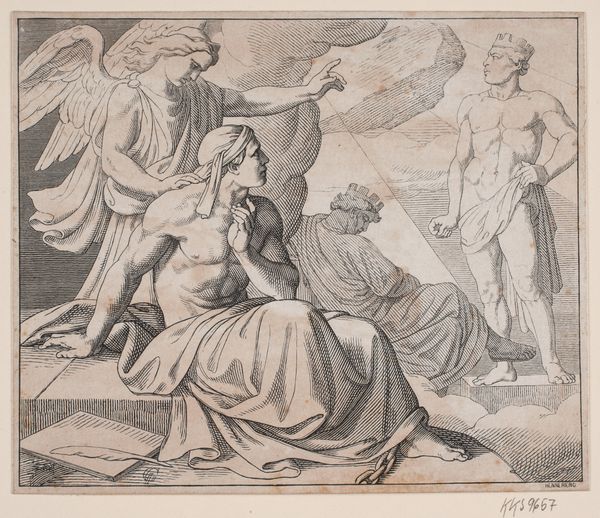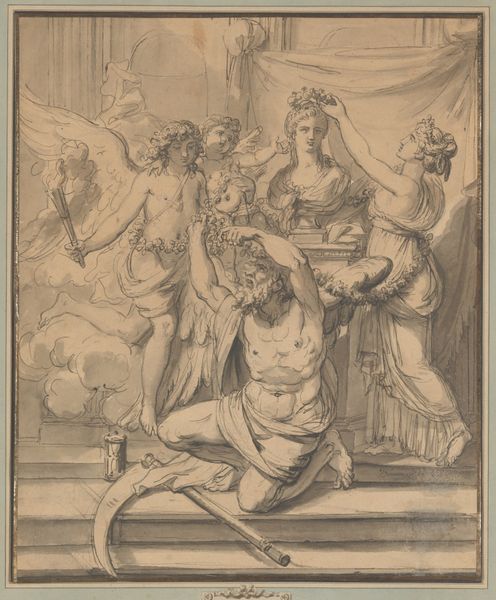
The Story that Stops Time (L'Histoire qui arrête le temps) 1708 - 1754
0:00
0:00
drawing, print, engraving
#
drawing
#
allegory
#
baroque
# print
#
history-painting
#
engraving
Dimensions: Image: 13 1/4 × 8 3/4 in. (33.7 × 22.3 cm) Sheet: 15 1/4 × 10 1/2 in. (38.7 × 26.7 cm)
Copyright: Public Domain
Curator: Welcome. Before us is "The Story that Stops Time," an engraving by Charles Nicolas Cochin I, produced sometime between 1708 and 1754. It is currently part of the collection at the Metropolitan Museum of Art. Editor: Immediately, the allegorical drama strikes me. The winged figure of Time, burdened with a scythe and a string of coins, appears to be forcefully restrained by the outstretched hand of a seated woman. It feels heavy, laden with meaning about power and narrative control. Curator: Yes, Cochin offers us a quintessential Baroque allegory. We see History, represented by the woman with her stylus and open book, literally stopping Time. Notice the discarded symbols of royalty at her feet, a sceptre and a crown lying in defeat. Editor: I find it interesting how History is embodied as a woman, a recorder and keeper of events. Is she stopping Time or redirecting it? Whose stories are considered important enough to be preserved and why? The power dynamic between History and Time—gendered in this case—is rather charged. Curator: The French court was fascinated by antiquity and allegory. By halting Time, History, guided by reason, could supposedly secure lasting fame for noble deeds. The political message is that only history, truthfully recorded, ensures immortality, not simply fleeting temporal power as represented by those fallen objects. Editor: And it implies, of course, that history itself is neutral, unbiased which, as we know, is never really true. Who commissions history? What are their agendas? Look at how Time clutches those coins – even Time, supposedly objective, is tainted by material concerns and I wonder if Cochin intended for a subtle critique of that. Curator: Such subtleties existed, yet, for Cochin and his patrons, the goal was arguably to portray an ordered cosmos in line with the ideals of absolute monarchy, but there were definitely more going on here that is now a very interesting study! Editor: Exactly! By interrogating what this print leaves unsaid, or perhaps obscures behind its seemingly straightforward message, we can start conversations around historiography, legacy, and the politics of storytelling. What this print “wants” to do, the role that the patron wants this work to play… and finally the real result of the encounter, its modern-day influence as we discuss it in 2024, that to me is true engagement with a historical artwork!
Comments
No comments
Be the first to comment and join the conversation on the ultimate creative platform.


